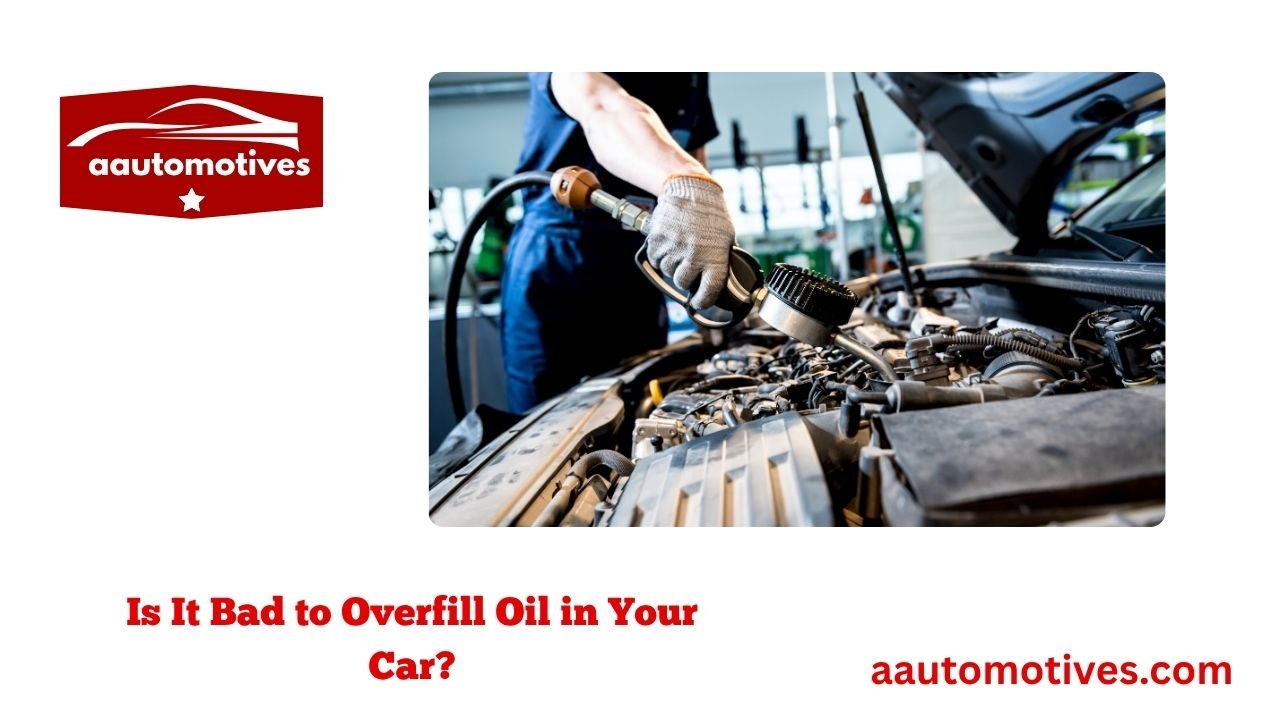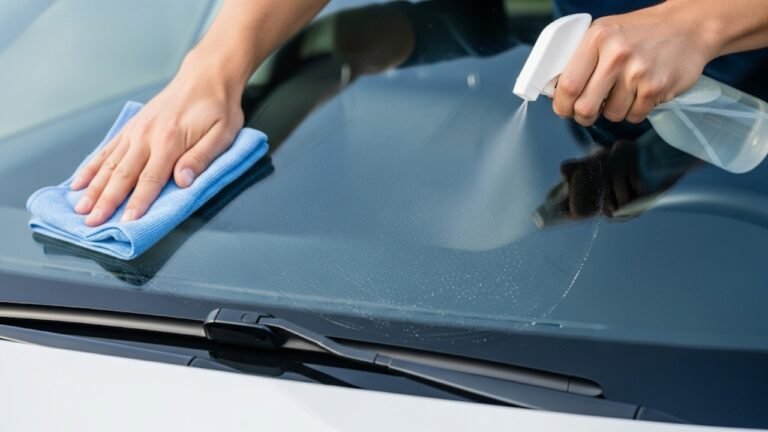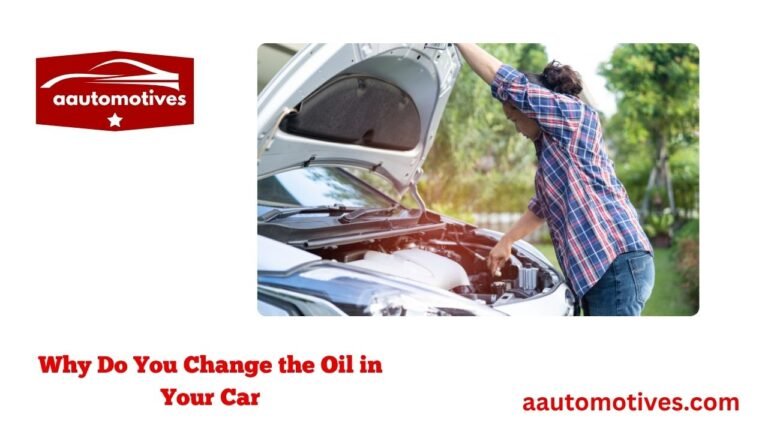Is It Bad to Overfill Oil in Your Car?

Ever topped off your car’s oil, thinking “a little more won’t hurt”? You’re not alone. It’s something many of us have done, especially when we’re in a rush or trying to be extra cautious. I remember the first time I overfilled my car’s oil. I thought I was doing it a favor—giving it more of what it needs to stay healthy. Turns out, I was wrong.
So, is it bad to overfill oil in your car? The short answer: Yes, it is. But the reasons go beyond a simple yes or no. In this article, we’ll dig into the risks, consequences, symptoms, and what you can do if you accidentally overfill. We’ll use everyday language and real-world comparisons, so you won’t need to be a mechanic to understand what’s going on under your hood.
In This Article
- 1 Why Your Car Needs Just the Right Amount of Oil
- 2 Symptoms of Overfilled Engine Oil You Shouldn’t Ignore
- 3 Real Dangers: What Happens If You Keep Driving with Too Much Oil?
- 4 Common Reasons Why People Overfill Their Car’s Oil
- 5 How to Check If You Overfilled Oil in Your Car
- 6 What to Do If You’ve Overfilled Engine Oil
- 7 How to Prevent Overfilling Oil in Your Car: Simple Habits That Save You Money
- 8 The Science Behind Oil Overfill: Why It’s So Damaging
- 9 Why Mechanics Take Overfilled Oil Seriously
- 10 FAQs About Overfilling Oil in Your Car
- 10.1 1. How much oil is too much in a car?
- 10.2 2. Can I drive a short distance with too much oil?
- 10.3 3. How do I fix overfilled oil without draining it all?
- 10.4 4. Will the check engine light come on if there’s too much oil?
- 10.5 5. Can too much oil damage a turbocharged engine faster?
- 10.6 6. Is overfilling engine oil covered under warranty?
- 10.7 7. What’s safer: slightly overfilling or slightly underfilling?
- 10.8 8. How do I know my mechanic didn’t overfill the oil?
- 11 Cultural Insight: Why DIY Oil Changes Are Common (and Risky)
- 12 Emotional Hook: A $7 Mistake That Cost Me $700
- 13 Final Thoughts: Respect the Dipstick, Protect Your Engine
Why Your Car Needs Just the Right Amount of Oil

When you overfill oil in your car, you throw that balance off. It’s like overwatering a plant. More water doesn’t mean more growth—it just drowns the roots. In the same way, too much oil drowns your engine in a mess of problems you’d rather avoid.
Let’s break it down. The oil in your engine does several things:
-
Lubricates moving parts
-
Helps cool engine components
-
Reduces friction and wear
-
Cleans out small debris and carbon buildup
-
Maintains pressure balance in the crankcase
But when there’s too much oil, instead of doing these jobs, the oil starts foaming. Foamy oil doesn’t lubricate well. It loses pressure and can’t flow properly. That’s when the trouble begins.
Symptoms of Overfilled Engine Oil You Shouldn’t Ignore
I wish I’d known these signs before my check engine light came on. The symptoms of overfilling oil in your car are subtle at first but can quickly snowball into costly repairs. Here are the most common warning signs:
-
Burning oil smell: That sharp, chemical scent? It’s oil dripping onto hot parts like the exhaust.
-
Blue smoke from the exhaust: This means oil is getting into the combustion chamber and burning.
-
Strange engine noises: Too much oil increases pressure. You might hear knocking, whining, or ticking.
-
Poor performance: If your engine feels sluggish or hesitates during acceleration, it might be drowning in excess oil.
-
Oil leaks: Overpressure can blow seals and gaskets, leading to leaks.
-
Check engine light: This can come on for a variety of reasons, but too much oil is often one of them.
I remember pulling out of a grocery store parking lot, smelling burnt oil, and seeing a puff of blue smoke in my rearview mirror. I thought, “Did I just blow something up?” A quick look under the hood confirmed it—too much oil.
Real Dangers: What Happens If You Keep Driving with Too Much Oil?
We’ve all been tempted to ignore small car issues, especially if we’re busy or cash-strapped. But driving with overfilled oil isn’t something you want to put off. The longer you wait, the more damage can pile up.
Here’s what might happen if you let it slide:
| Risk | Description |
|---|---|
| Oil Foaming | Excess oil churns with the moving crankshaft, creating foam. Foamy oil doesn’t lubricate well. |
| Crankshaft Damage | The rotating crankshaft may come into contact with excess oil, increasing resistance and wearing out faster. |
| Blown Seals | Too much pressure can blow seals and gaskets, leading to oil leaks and expensive repairs. |
| Catalytic Converter Damage | Burning oil can ruin your catalytic converter, which costs hundreds (sometimes thousands) to replace. |
| Hydrolock Risk | In extreme cases, oil can flood combustion chambers and cause hydrolock, a condition where the engine can’t rotate due to fluid buildup—this often destroys the engine. |
It’s not about overreacting—it’s about prevention. Engines are built with tight tolerances. Even half a quart too much can lead to these problems over time.
Common Reasons Why People Overfill Their Car’s Oil
Let’s not beat ourselves up. Overfilling often happens with the best intentions. Here are some common mistakes:
-
Guessing instead of measuring: Pouring oil without checking the dipstick after each addition.
-
Not waiting after draining old oil: Oil takes time to settle. If you rush, you might think there’s less oil than there actually is.
-
Reading the dipstick incorrectly: It’s surprisingly easy to misread the markings, especially on newer cars.
-
Topping off too often: Some folks check oil daily and add more “just in case.”
I once had a neighbor who added a full quart every time he checked his dipstick. He didn’t realize the engine didn’t burn any oil at all. After a few weeks, his car started smoking and misfiring. Yup—overfilled again.
How to Check If You Overfilled Oil in Your Car
Knowing is half the battle. If you suspect you’ve added too much oil, here’s a simple way to check:
-
Wait until the engine cools down.
-
Park on level ground.
-
Pull out the dipstick, wipe it clean, and reinsert it fully.
-
Pull it out again and check the level.
If the oil level is above the maximum line, even slightly, you may have a problem. It’s better to drain a little than to ignore it.
Use this checklist:
-
Oil above “MAX” line on dipstick
-
New burning smell
-
Slight smoke from tailpipe
-
Engine feels “off” or louder
-
Visible oil leak after parking
If you check more than one box, you should take action.
What to Do If You’ve Overfilled Engine Oil
Okay, let’s say it’s too late. You checked the dipstick and, yep, you overfilled. No need to panic. Here’s how to fix it:
Option 1: Use an Oil Extractor Pump
You can use a simple pump to pull out excess oil through the dipstick tube. It’s clean and doesn’t require getting under the car.
Option 2: Loosen the Drain Plug
If you’re comfortable under the car, carefully loosen the oil drain bolt and let a little oil out. Make sure you don’t drain too much!
Option 3: Visit a Mechanic
If the engine is already showing symptoms, it’s best to have a pro look at it. They can check for deeper issues like foaming or blown gaskets.
How to Prevent Overfilling Oil in Your Car: Simple Habits That Save You Money
You don’t need to be a car expert to avoid overfilling. A few mindful habits can make a big difference. When I started changing my own oil, I learned through trial and error. What helped me most were the routines I built over time. Here are a few that can help you too:
-
Measure first, pour later: Don’t dump oil straight from the bottle. Use a measuring cup or marked container.
-
Add in small amounts: Pour a bit, then check the dipstick before adding more.
-
Let oil settle: After adding, wait 5–10 minutes. The reading changes as oil drains into the pan.
-
Check on a level surface: Even a slight incline can give a false high reading.
-
Know your car’s specs: Your owner’s manual tells you the exact oil capacity (usually in quarts or liters).
Treat it like seasoning food. You can always add more salt—but you can’t unsalt a dish once it’s ruined. When it comes to oil, less is safer than too much.
The Science Behind Oil Overfill: Why It’s So Damaging
Now, if you’re wondering why overfilling oil in your car causes so many issues, here’s a simple breakdown of the science. When there’s too much oil, the crankshaft—spinning at thousands of RPM—slaps into the oil and whips it into foam. That foam is full of air bubbles, and air doesn’t lubricate.
Imagine washing your hands with foamy soap versus rich, thick oil. One glides, the other dries out quickly and creates friction. In your engine, friction leads to wear, heat, and eventual failure.
Also, engines are built with positive crankcase ventilation (PCV) systems. These regulate pressure and remove vapors. Overfilled oil overwhelms the PCV, causing oil to leak into the air intake or the combustion chamber. That’s where burnt oil, smoke, and converter damage come from.
Why Mechanics Take Overfilled Oil Seriously
I once asked my mechanic, “Is overfilling oil really that big of a deal?” He raised an eyebrow and said, “It’s one of the easiest ways to mess up a good engine.” That stuck with me.
Professionals often flag overfilled oil before even checking the engine. They’ve seen the worst—sludged engines, blown seals, even total failures. The cost of fixing an engine hydrolocked by oil? Sometimes more than the car is worth.
That’s why even a few ounces too much is treated with care in auto shops. If the pros are careful about it, we should be too.
FAQs About Overfilling Oil in Your Car
1. How much oil is too much in a car?
Even half a quart over the max line can be risky. Modern engines are tight and precise. Always stay within the dipstick range.
2. Can I drive a short distance with too much oil?
Possibly—but it’s not worth the risk. Even a short drive can cause pressure buildup or foaming. If you must drive, keep RPMs low and fix it ASAP.
3. How do I fix overfilled oil without draining it all?
You can use an oil extractor pump to remove small amounts through the dipstick tube. These tools are inexpensive and easy to use.
4. Will the check engine light come on if there’s too much oil?
Yes. Overfilled oil can trigger various sensors, especially if it causes misfires, crankcase pressure, or leaks. Always check codes if the light appears.
5. Can too much oil damage a turbocharged engine faster?
Absolutely. Turbocharged engines are even more sensitive to oil levels. Overfilling can ruin the turbo seals or cause oil to burn inside the turbocharger itself.
6. Is overfilling engine oil covered under warranty?
Usually not. Most manufacturers consider it user error. If you caused the overfill, they won’t cover engine damage under warranty.
7. What’s safer: slightly overfilling or slightly underfilling?
Slightly underfilling (by less than 1/4 quart) is generally safer than overfilling. But always aim to be within the manufacturer’s recommended range.
8. How do I know my mechanic didn’t overfill the oil?
Always check the dipstick yourself, even after a shop visit. Trust but verify—mistakes happen everywhere, even at dealerships.
Cultural Insight: Why DIY Oil Changes Are Common (and Risky)
In many places like the U.S., Australia, or parts of Europe, people prefer to do their own car maintenance. It’s a source of pride—just like grilling the perfect steak or fixing a leaky faucet. But without knowing exact specs or following every step carefully, overfilling oil becomes one of the most common DIY mistakes.
I once saw a car at a gas station with oil spilling out from the dipstick. The guy looked baffled—he thought he was helping his car by adding more. Turns out, he’d poured in two extra quarts. His engine was toast.
Being hands-on is great. But it comes with responsibility. Precision matters, even when it’s just “topping off the oil.”
Emotional Hook: A $7 Mistake That Cost Me $700
I’ll never forget my rookie mistake. I bought an extra bottle of oil—“just in case”—and dumped it in after changing my filter. I didn’t wait. I didn’t check the dipstick. A week later, my car started jerking. Then came the burning smell. Then smoke.
I’d overfilled it by nearly a quart.
I had to replace the PCV valve, clean the intake, and fix a leaking gasket. It cost me $700, all because of an extra $7 bottle of oil.
It taught me a big lesson: more isn’t always better. Especially with engines.
Final Thoughts: Respect the Dipstick, Protect Your Engine
To wrap it all up—is it bad to overfill oil in your car? Absolutely. It might seem harmless at first, but overfilling leads to:
-
Foamed-up, ineffective oil
-
Blown seals and gaskets
-
Reduced performance
-
Long-term engine damage
The good news? It’s totally avoidable. All it takes is a little patience, a careful pour, and a double-check on the dipstick. Your car doesn’t need extra love in the form of extra oil—it just needs the right amount.
So next time you pop the hood, take a breath. Don’t rush. Remember: when it comes to engine oil, balance is everything.






